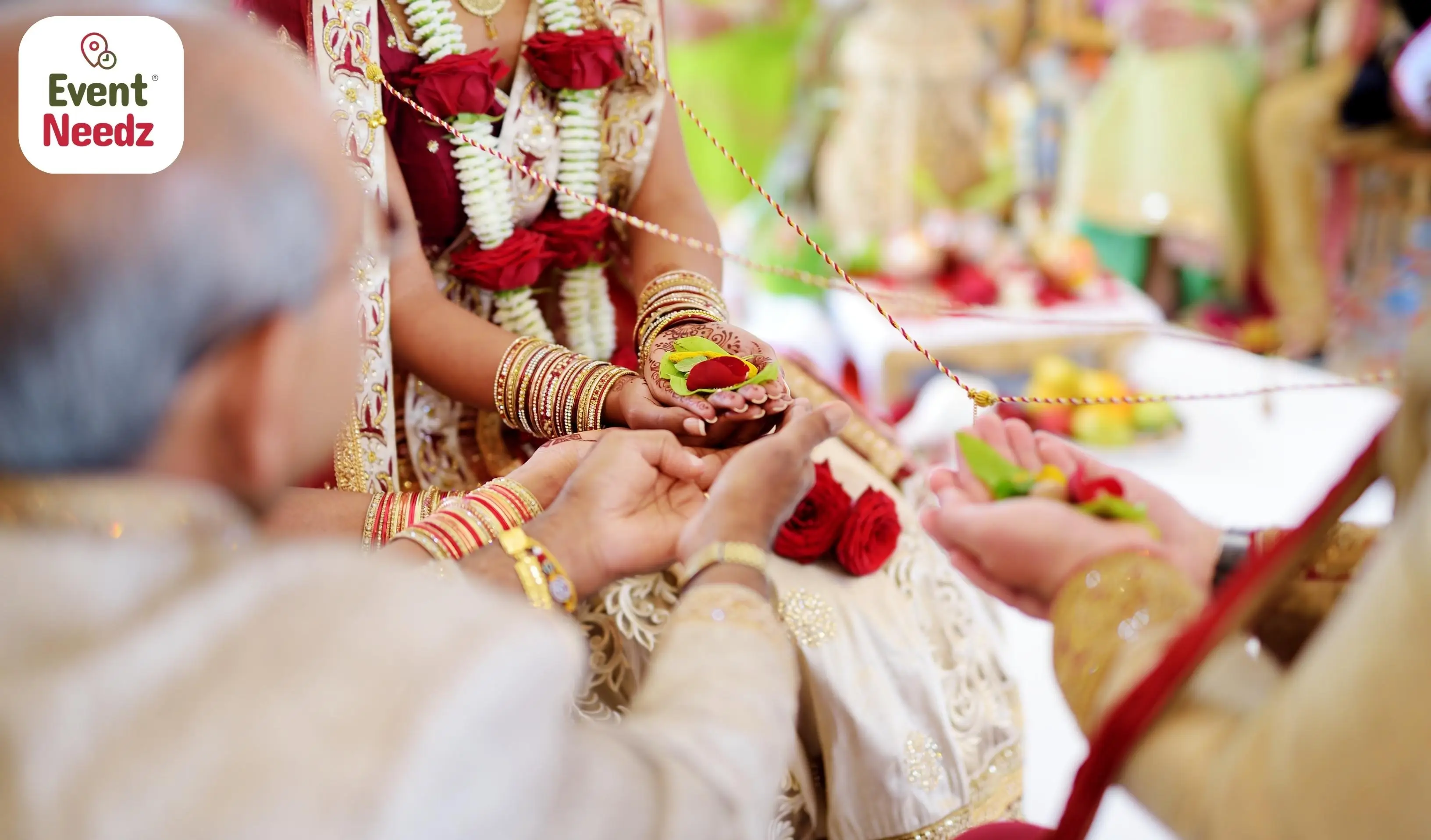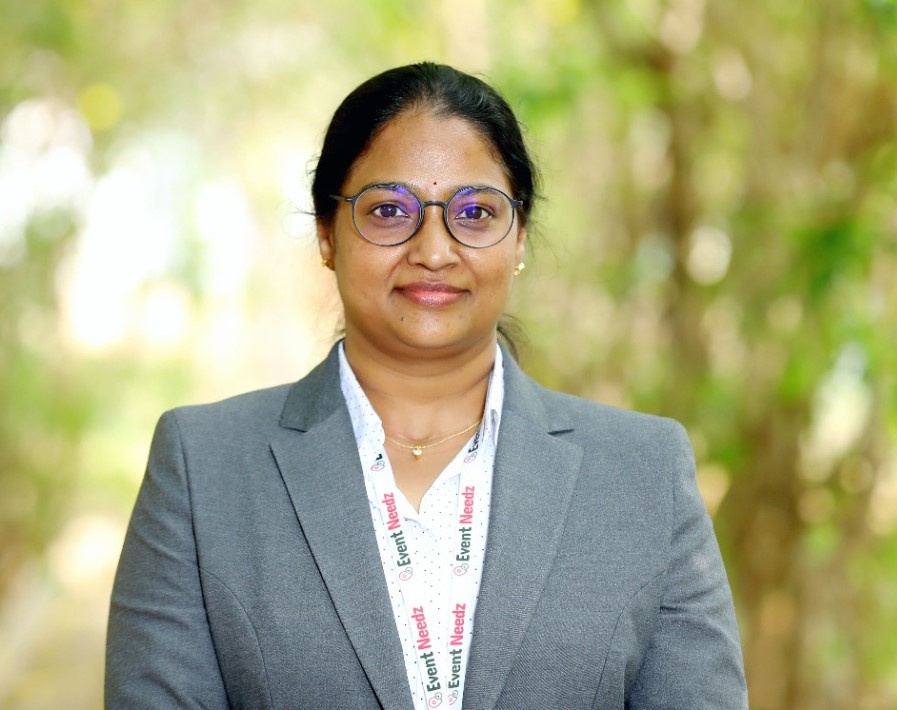Advertisement

Team @ EventNeedz
The Meaning Behind the Rituals of a Hindu Wedding

Hindu weddings are a vibrant and colorful celebration of love, family, and tradition. They are a beautiful reflection of the rich cultural heritage of Hinduism. The rituals and ceremonies during a Hindu wedding are steeped in symbolism and meaning.
Here is a point-wise sequence of a typical Hindu wedding ceremony, along with an explanation of the importance of each ritual and its origins in the Vedas:
1. Pre-Wedding Ceremonies:Engagement: The couple formally agrees to get married, and exchange engagement rings.
Haldi: This is a pre-wedding ritual in Hindu weddings where a paste made of turmeric, sandalwood, and other herbs is applied to the bride and groom's skin. The ceremony is typically held on the morning of the wedding day. It is attended by the bride and groom's close family and friends. The haldi ceremony is believed to bring good luck and happiness to the couple. The yellow color of turmeric is also associated with auspiciousness. The haldi ceremony is a sign of love and affection. The bride and groom are smeared with haldi by their close family and friends, who wish them well on their wedding day. It is a time for the bride and groom to bond with their family and friends and to prepare for their big day in a meaningful and traditional way.
Mehendi: The bride's hands and feet are decorated with henna designs. This ritual symbolizes love and is believed to bring good luck and happiness to the young couple. Mehendi holds cultural significance in Hindu Weddings as it is a traditional practice passed down from generation to generation. The Mehendi ceremony originates in the Vedas, where it is believed that the bride's hands are decorated with Mehendi as a symbol of her love for her husband and to bring good luck and prosperity to the couple.
Sangeet: A musical evening celebrated by the bride and groom's families, usually a day before the wedding. It is a celebration of love, music, and dance.2. Main Wedding Ceremony:Baraat: The groom's wedding procession, usually on horseback or in a decorated car, to the wedding venue. This ritual symbolizes the groom's journey to the bride's home to take her as his wife.
Groom's arrival: The groom arrives at the wedding venue and is greeted by the bride's family. This critical tradition signifies the groom's acceptance into the bride's family.
Exchange of garlands: The couple exchanges flower garlands, symbolizing their acceptance of each other as life partners.Kanyadaan: The bride's father gives his daughter away to the groom. This ritual symbolizes the father's blessings and the bride's transition from her father's protection to her husband's. It finds its origin in the Vedas, where it is believed that the father is giving away his daughter to the groom with the hope that she will be well taken care of.
Saat Phere: The couple takes seven vows, promising to love and support each other for life. This ritual finds its origin in the Vedas, as it is said that seven promises made in front of the fire God will be honored by God and fulfilled by the couple.
Sindoor and Mangalsutra: The groom applies Sindoor (vermilion powder) on the bride's forehead and ties a mangal sutra (sacred necklace) around her neck. This ritual signifies the bride's married status and acceptance of her husband as her life partner. Sindoor finds its origin in the Vedas, as it is said that the fire god is invoked to witness the promises made between the couple, and the Sindoor is applied as a symbol of the same.
3. Post-Wedding Ceremonies:
Sindoor and Phera: The groom applies Sindoor in the hair parting of the bride and takes seven rounds around the sacred fire, symbolizing seven promises made to each other for a lifetime.Sindoor and Sindoor Daan: The groom applies Sindoor on the hair parting of the bride and gives Sindoor Daan, symbolizing the completion of the marriage ceremony.Ashirwad: The couple receives blessings from the elders of the family. This traditional ritual finds its origins in the Vedas, where it is believed that the benefits of the elders will bring good luck and prosperity to the couple.
Vidaai: The bride says goodbye to her family as she leaves to start her new life with her husband. This ritual symbolizes the bride's transition from her family to her husband's. It is said to have originated from the Vedas, where the bride is believed to be leaving her family with the hope that.
To summarize, Hindu weddings are a grand celebration of love, family, and tradition. Each ritual holds significant meaning and reflects the rich cultural heritage. They bring together families, friends, and communities in a positive and meaningful way, making it a lifetime event to cherish.
www.eventneedz.com is an exclusive platform that caters to all aspects of traditional rituals by connecting several interested vendors to handle the event. Here, you get quotes from multiple vendors without phone calls and a free event coordinator who will make your moment a seamless exercise. Try the power of technology and experience convenience.
About
A blog is an online Article or informational website displaying information in reverse chronological order, with the latest posts appearing first, at the top. It is a platform where a writer or a group of writers share their views on an individual subject.

Advertisement



 Google
Google  Facebook
Facebook 






